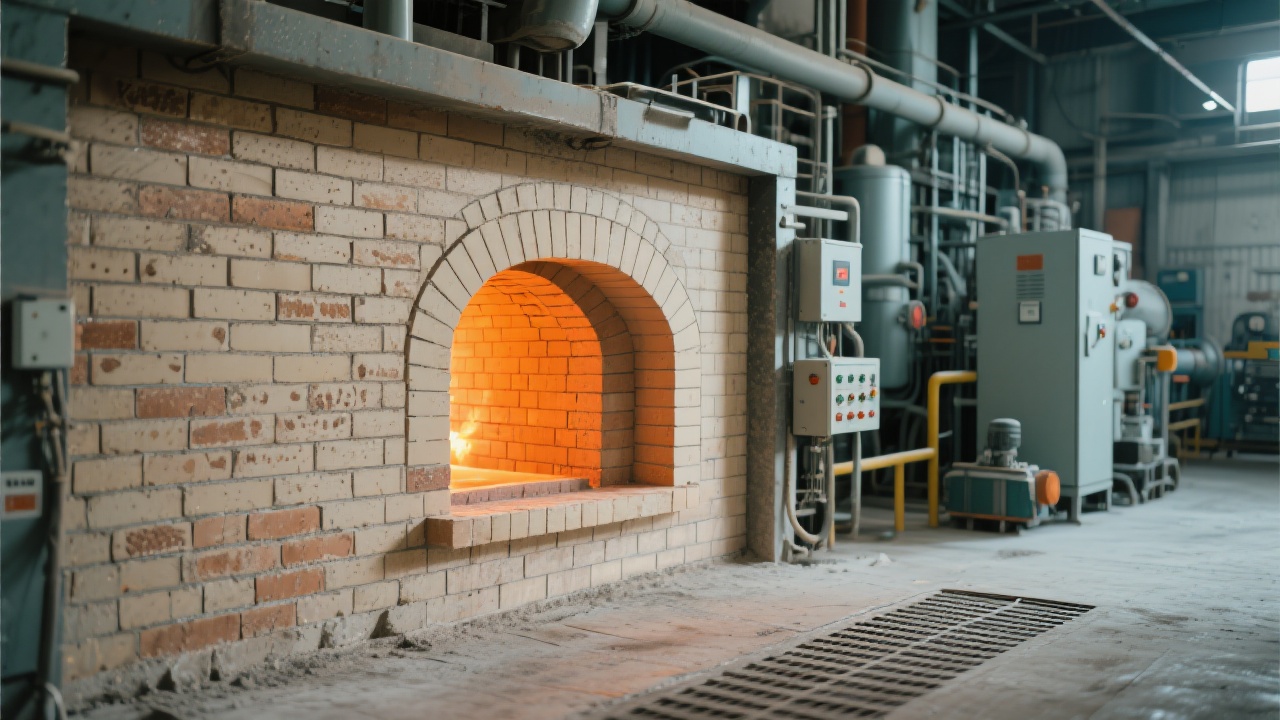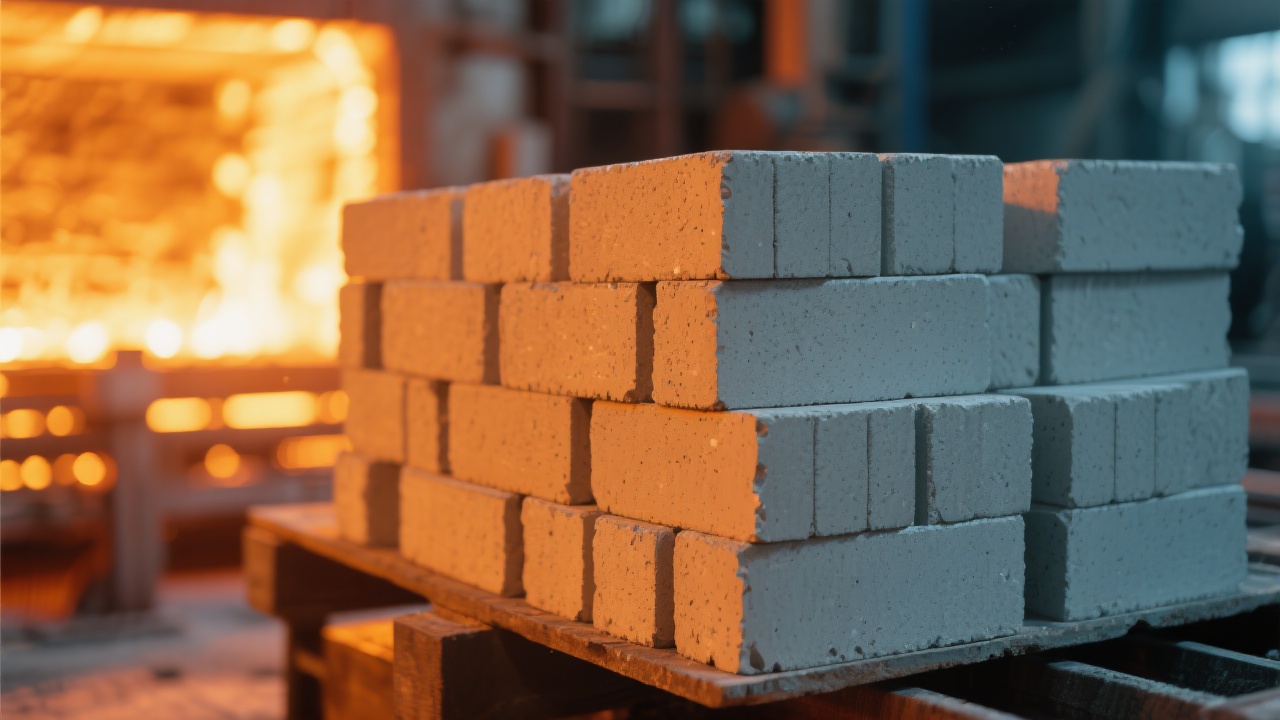
In the industrial kiln sector, material degradation caused by alkali slag corrosion and sustained high temperatures remains a persistent challenge. Traditional magnesia bricks, widely used for their refractory properties, often fall short when confronting prolonged exposure to aggressive alkaline environments and thermal cycling. Recent advancements have brought synthesized magnesium olivine bricks to the forefront, touted for superior durability and cost-efficiency. But what exactly sets them apart, and how do they perform in real-world applications? This analysis dives deep into compositional science, performance data, and case studies to clarify their advantages over conventional magnesia bricks.
Kilns used in industries like glass manufacturing and cement production typically endure temperatures ranging from 1400°C to 1600°C. At these extreme conditions, refractory linings must resist not only thermal shock but also chemical erosion caused by alkaline slags. Ordinary magnesia bricks, composed primarily of MgO, offer decent high-temperature stability but are susceptible to rapid deterioration once infiltrated by aggressive chemicals, resulting in frequent shutdowns and costly maintenance.
Moreover, magnesium-chrome bricks, once the go-to for enhanced resistance, face environmental scrutiny due to chromium toxicity concerns, pushing the industry towards cleaner alternatives without compromising performance.
Synthesized magnesium olivine bricks are engineered from a carefully balanced blend of magnesium oxide (MgO) and silica (SiO2), reproducing the natural olivine mineral structure. This unique microstructure allows for a synergistic interaction between MgO and SiO2 phases, significantly enhancing resistance against alkali slag infiltration.
The dense crystalline network formed in these bricks endows them with exceptional thermal shock resistance and mechanical strength beyond what traditional magnesia bricks provide. Their high melting point (~1880°C) and chemical inertness minimize degradation even after prolonged kiln operation.
| Property | Synthesized Mg Olivine Brick | Ordinary MgO Brick |
|---|---|---|
| Max Service Temp (°C) | ~1880 | ~1800 |
| Alkali Slag Resistance | High – Minimal infiltration | Moderate – Prone to corrosion |
| Thermal Shock Stability | Superior | Standard |
| Environmental Impact | Low – Chromium-free | Moderate – No Cr but chemical instability |
| Lifetime (Typical) | 3-5 years | 1-2 years |
Let’s consider two major industrial users: a glass manufacturing plant in Germany and a cement kiln operator in Brazil. Both transitioned from ordinary magnesia bricks to synthesized magnesium olivine bricks, motivated by recurrent maintenance issues and high downtime costs.
After switching, the glass plant reported a 40% reduction in refractory wear rate, with kiln life extending from an average of 18 months to over 42 months. Meanwhile, the cement operator experienced a 30% reduction in unscheduled shutdowns related to refractory failure.

These improvements correlate with lab-tested alkali slag resistance metrics, where synthetic olivine bricks recorded a 50% slower corrosion rate under simulated kiln conditions than their magnesia counterparts. Additionally, the enhanced thermal shock resistance mitigated cracking, a common failure mode in high-temperature cycling.
Although synthesized magnesium olivine bricks may present a slightly higher upfront investment—typically around 15-20% more than ordinary magnesia bricks—the total cost of ownership drops significantly. Reduced downtime directly translates into higher production uptime and lower repair costs. From an environmental standpoint, the chromium-free formulation aligns with stricter regulatory requirements and corporate sustainability goals, making them a future-proof choice.
| Criteria | Synthesized Mg Olivine Brick | Ordinary MgO Brick |
|---|---|---|
| Initial Material Cost | Higher (by ~15-20%) | Lower |
| Maintenance & Downtime Cost | Significantly Reduced | Higher, frequent repairs |
| Environmental Compliance | Chromium-free, eco-friendly | No Cr but concerns over slag reactivity |

To sum up, industrial users aiming to optimize kiln performance and sustainability find synthesized magnesium olivine bricks a compelling choice. Reducing refractory wear means lowering outage frequency, which not only cuts costs but also ensures consistent product quality and operational safety.
While magnesium-chrome bricks feature excellent mechanical strength and chemical resistance, their chromium content poses environmental and health risks, limiting their acceptance in markets with strict regulations. Synthesized magnesium olivine bricks provide comparable performance without chromium, making them a preferred alternative with a better safety profile.

Choosing the right refractory lining is crucial for extending kiln lifespan and enabling green production processes. Selecting synthesized magnesium olivine bricks means lower downtime costs, extended equipment longevity, and compliance with environmental standards — advantages that pay off handsomely over the operational cycle.
Is your kiln struggling with frequent refractory failures or maintenance overhead? Discover how synthesized magnesium olivine bricks can transform your operations.
We invite industry professionals to share their experiences or specific challenges related to industrial kiln refractory materials. Your insights can spark tailored solutions — feel free to leave a comment or contact us for in-depth case studies.

